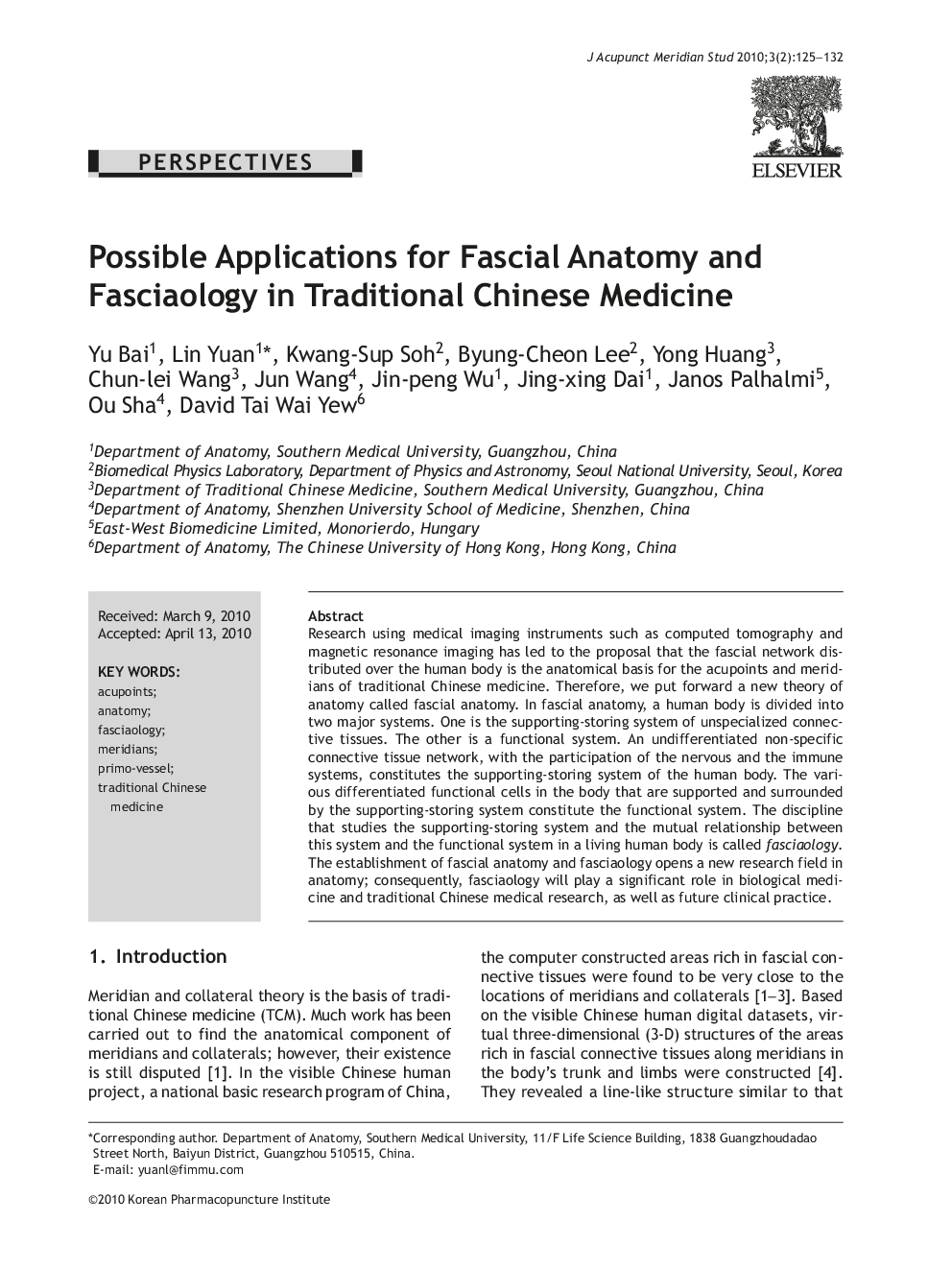| Article ID | Journal | Published Year | Pages | File Type |
|---|---|---|---|---|
| 3099044 | Journal of Acupuncture and Meridian Studies | 2010 | 8 Pages |
Research using medical imaging instruments such as computed tomography and magnetic resonance imaging has led to the proposal that the fascial network distributed over the human body is the anatomical basis for the acupoints and meridians of traditional Chinese medicine. Therefore, we put forward a new theory of anatomy called fascial anatomy. In fascial anatomy, a human body is divided into two major systems. One is the supporting-storing system of unspecialized connective tissues. The other is a functional system. An undifferentiated non-specific connective tissue network, with the participation of the nervous and the immune systems, constitutes the supporting-storing system of the human body. The various differentiated functional cells in the body that are supported and surrounded by the supporting-storing system constitute the functional system. The discipline that studies the supporting-storing system and the mutual relationship between this system and the functional system in a living human body is called fasciaology. The establishment of fascial anatomy and fasciaology opens a new research field in anatomy; consequently, fasciaology will play a significant role in biological medicine and traditional Chinese medical research, as well as future clinical practice.
